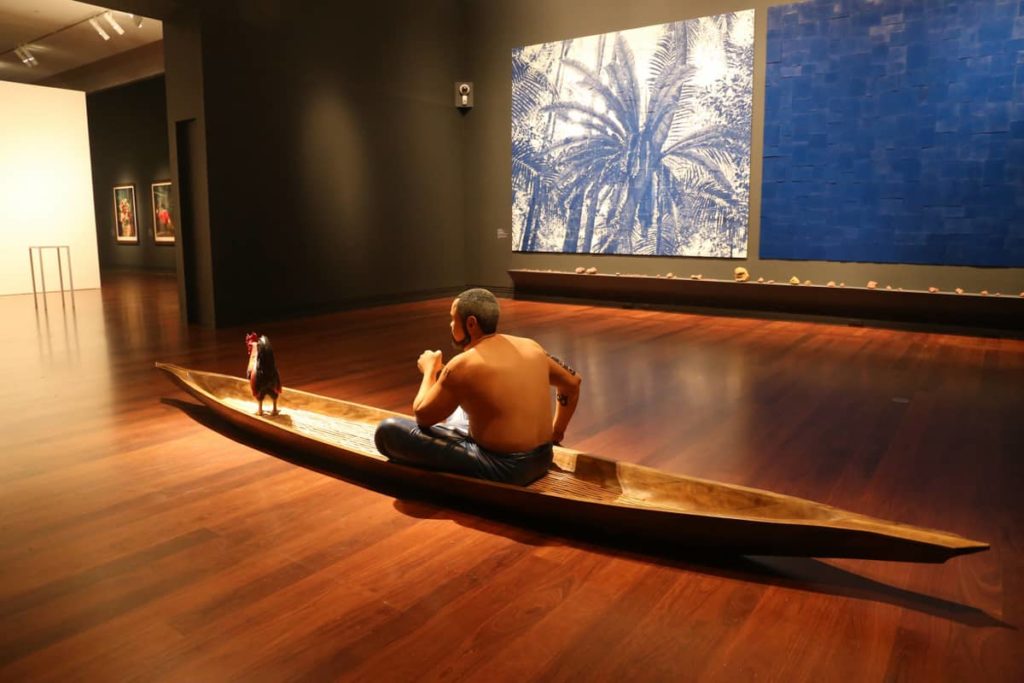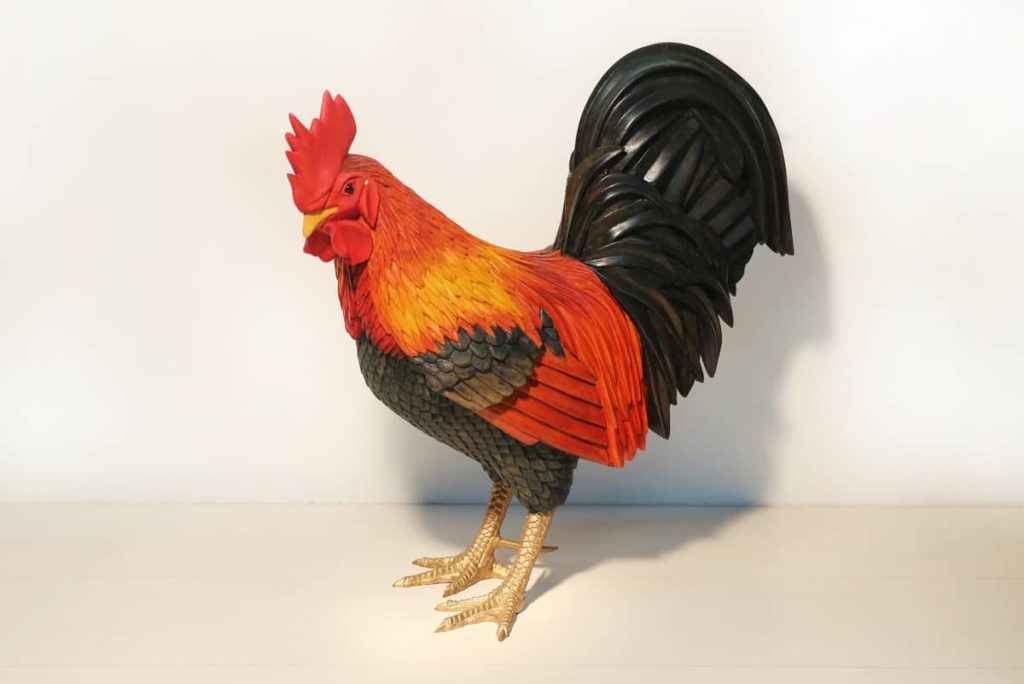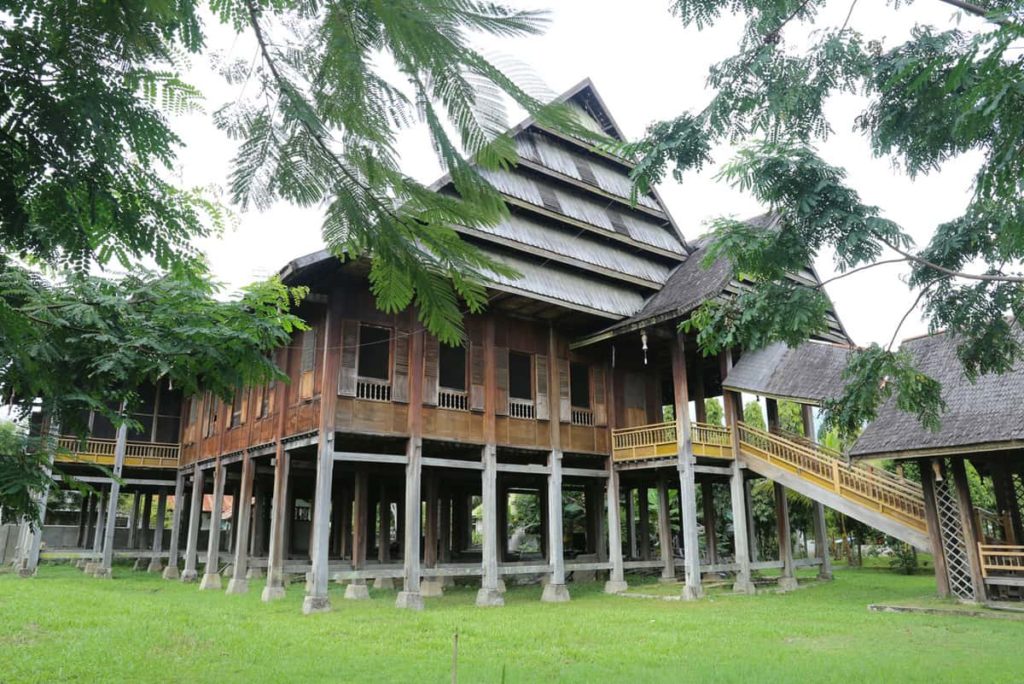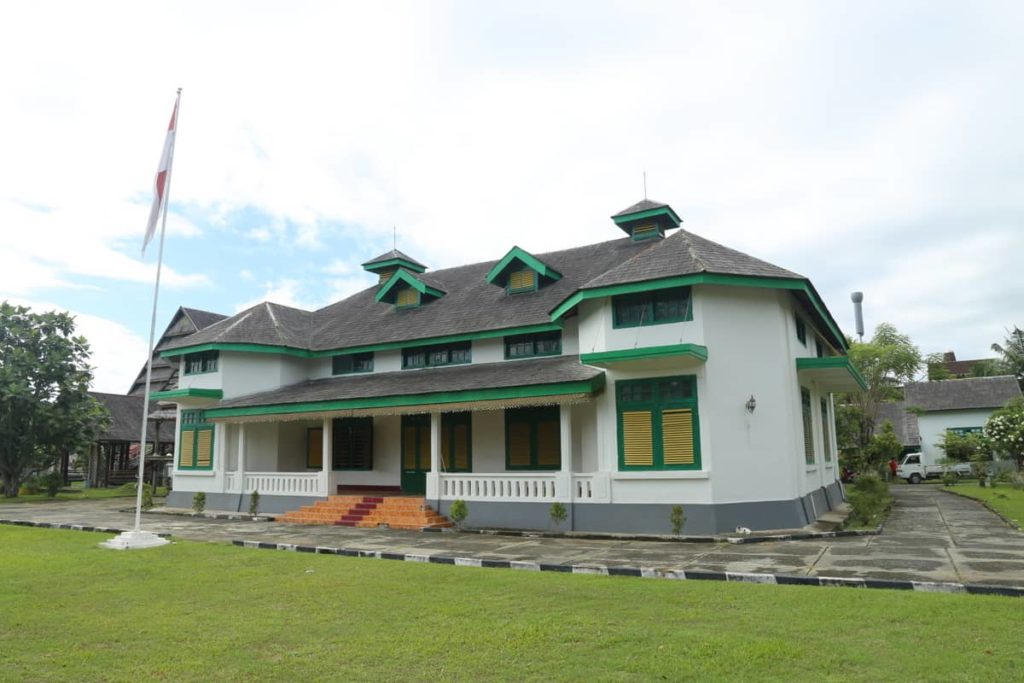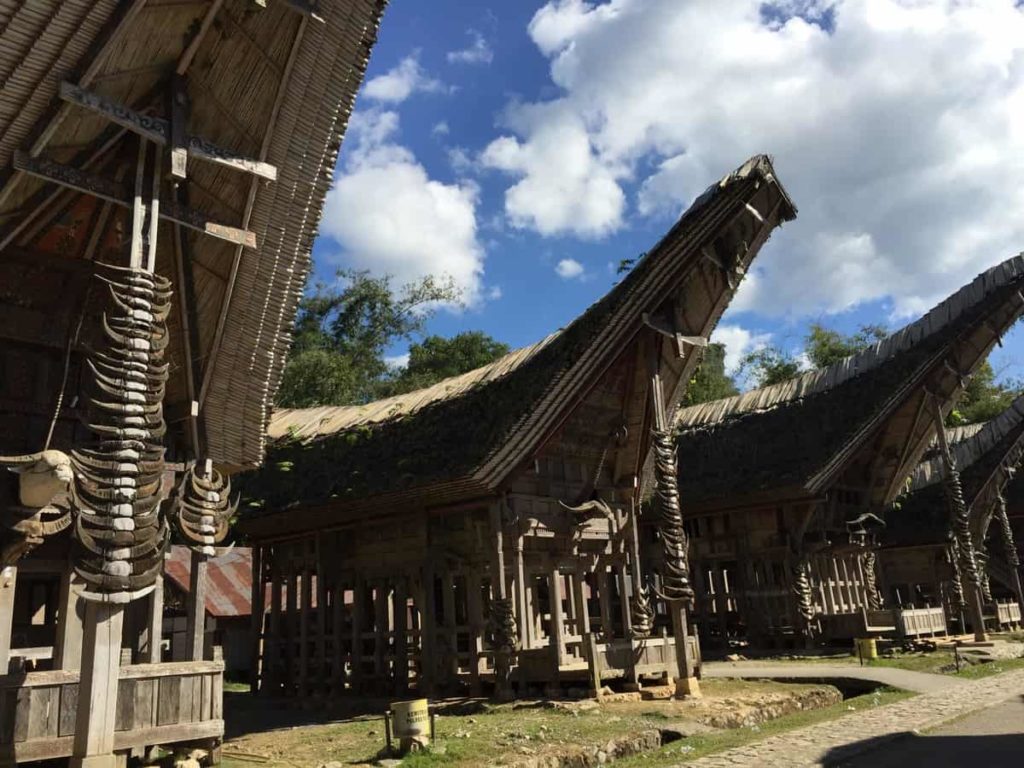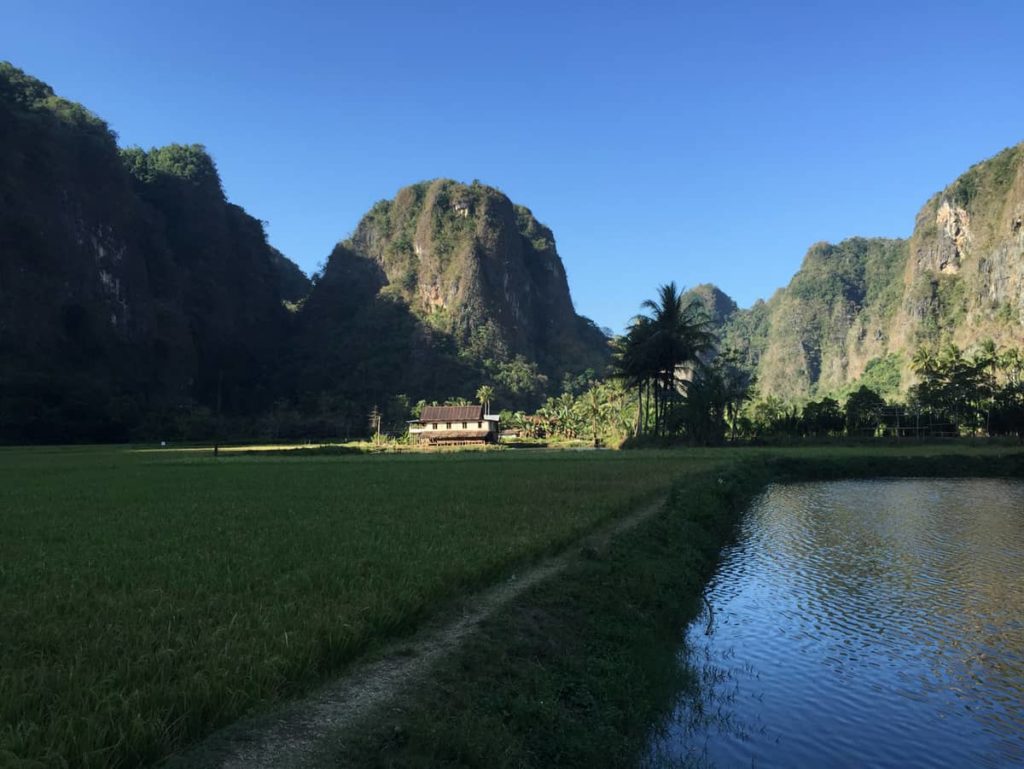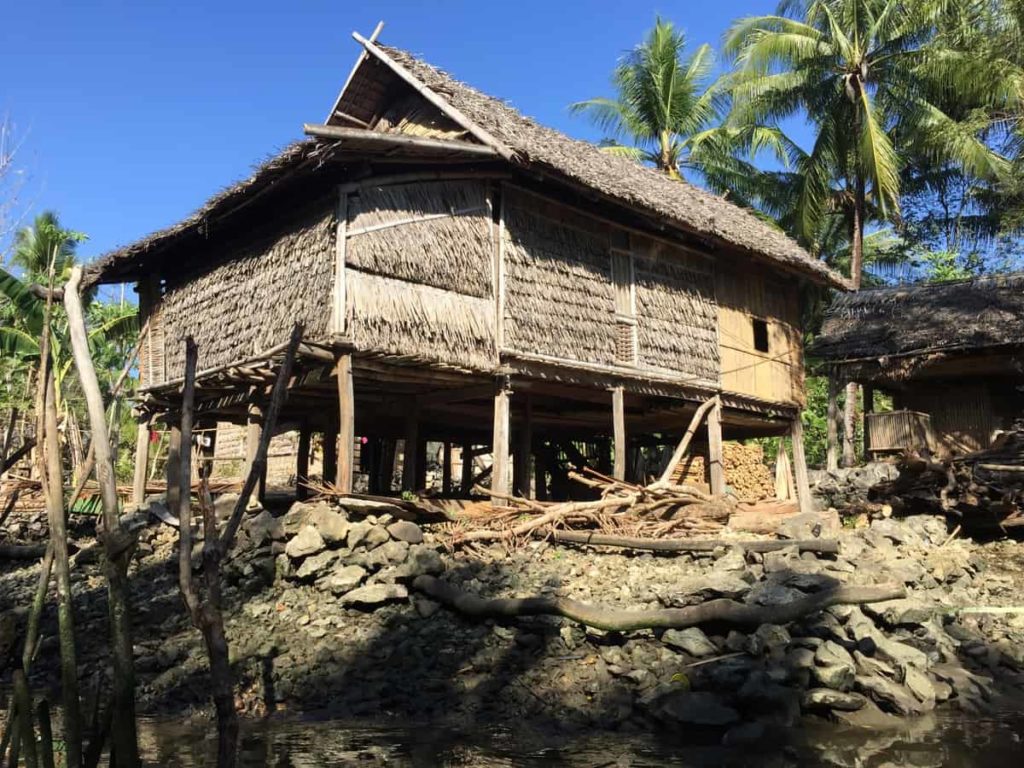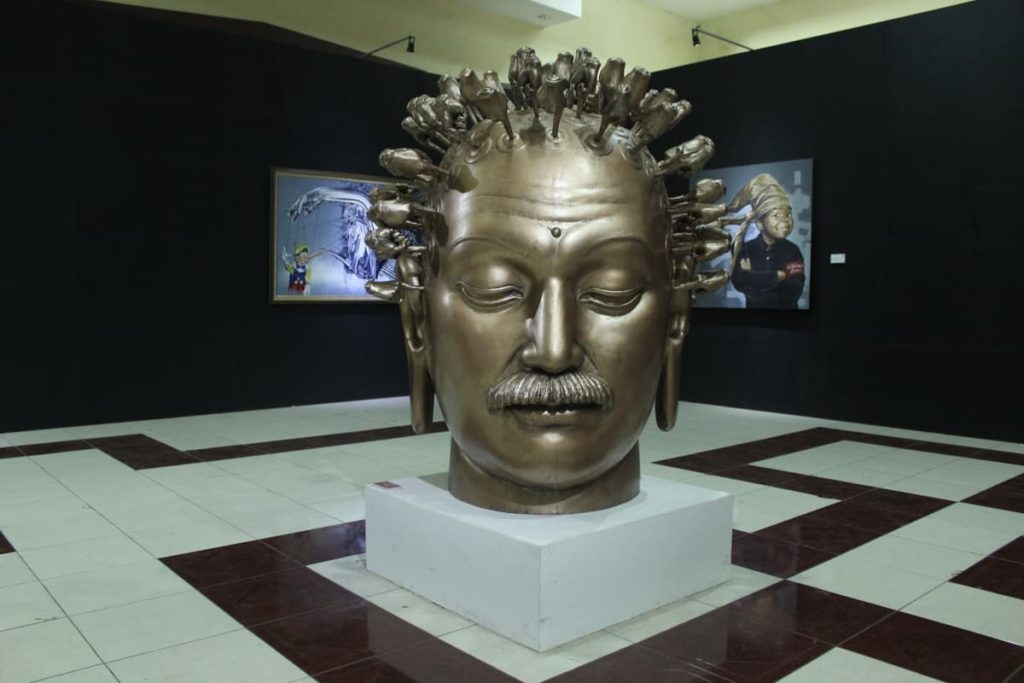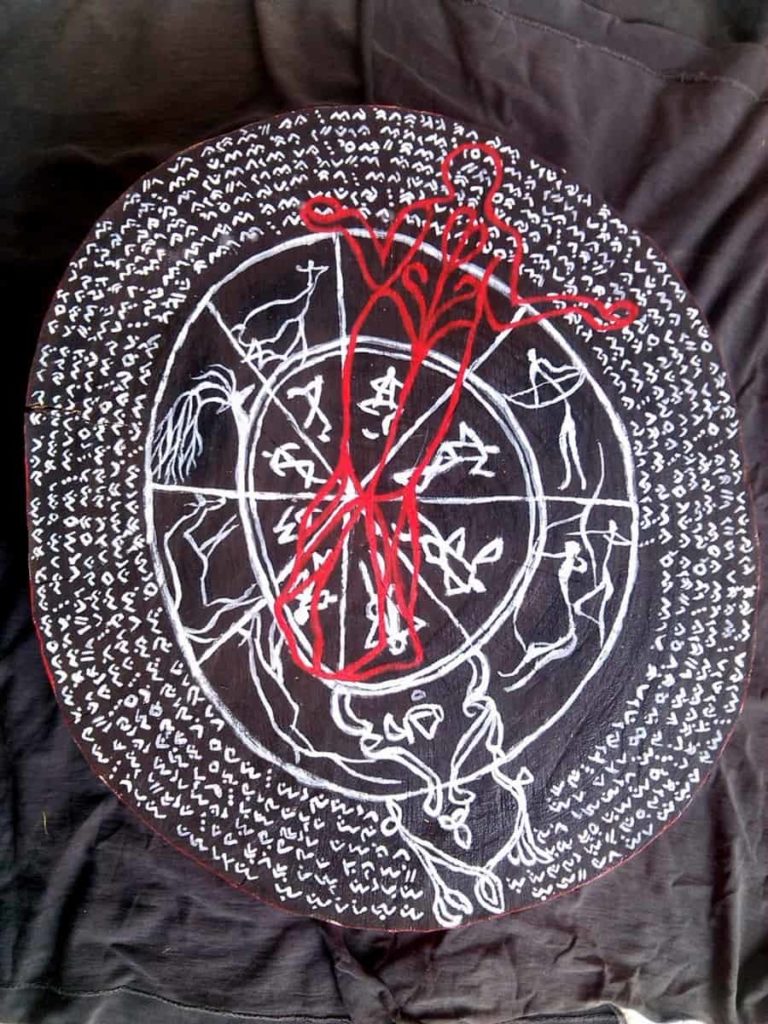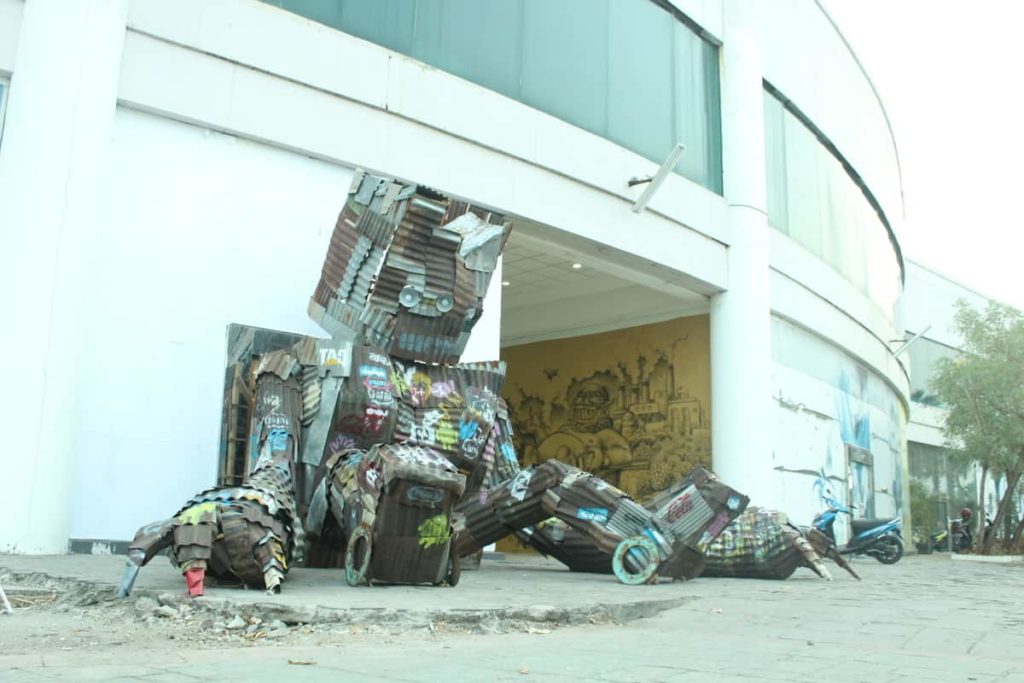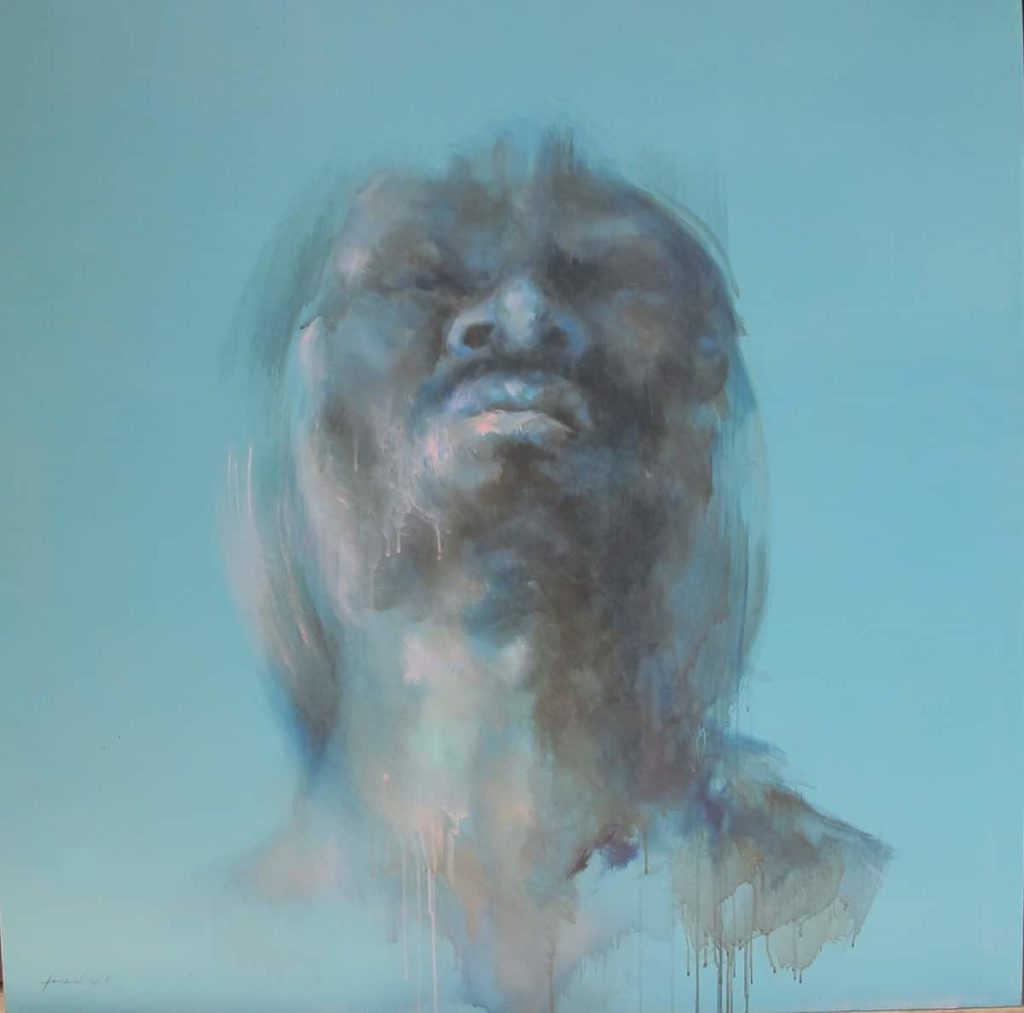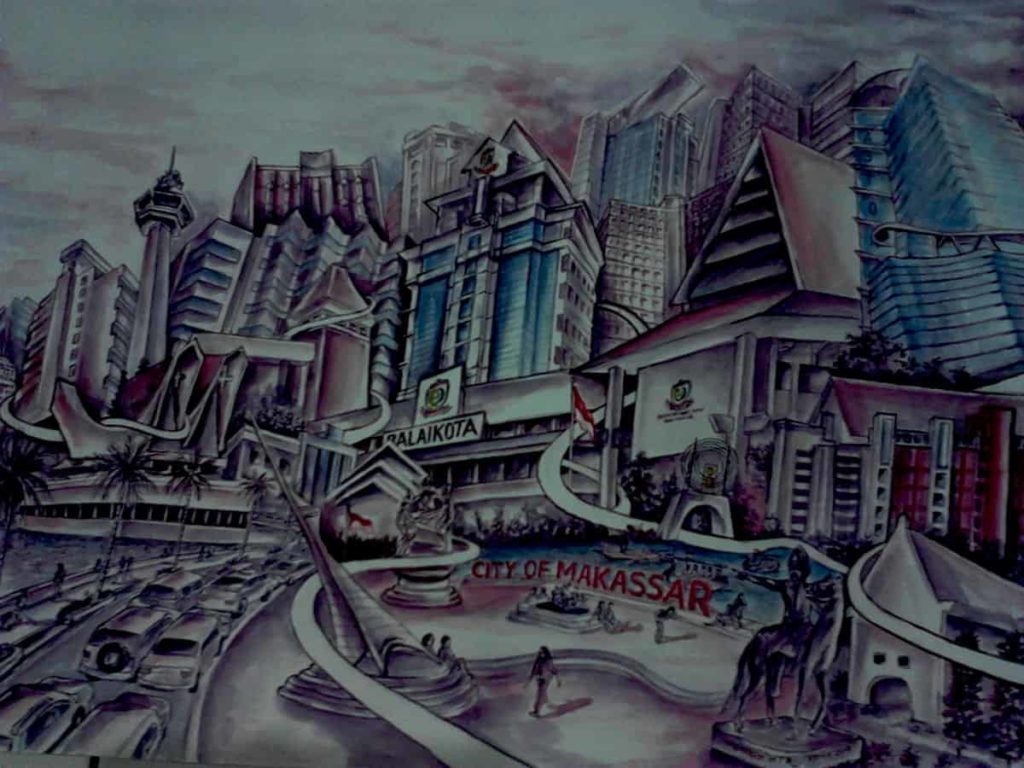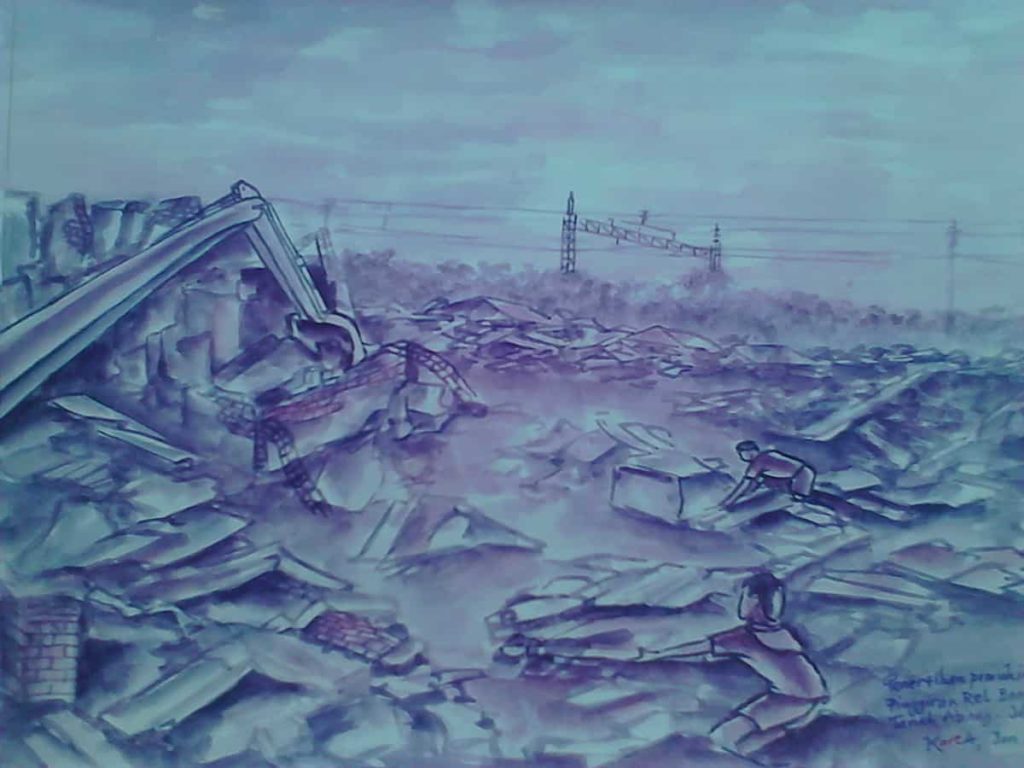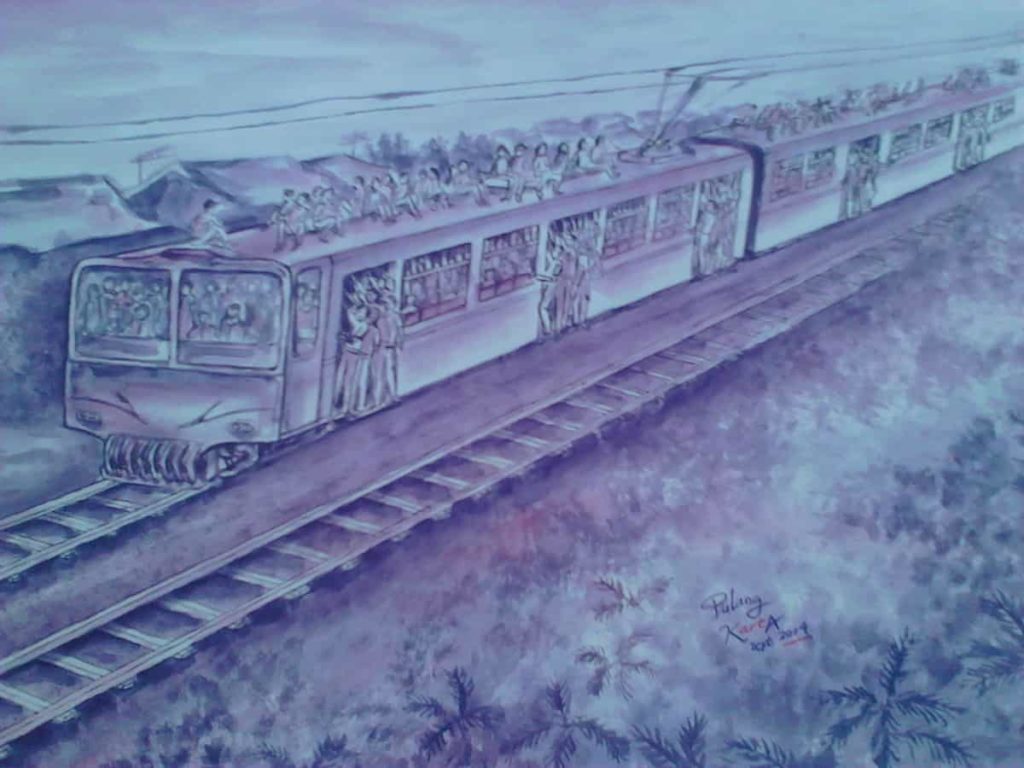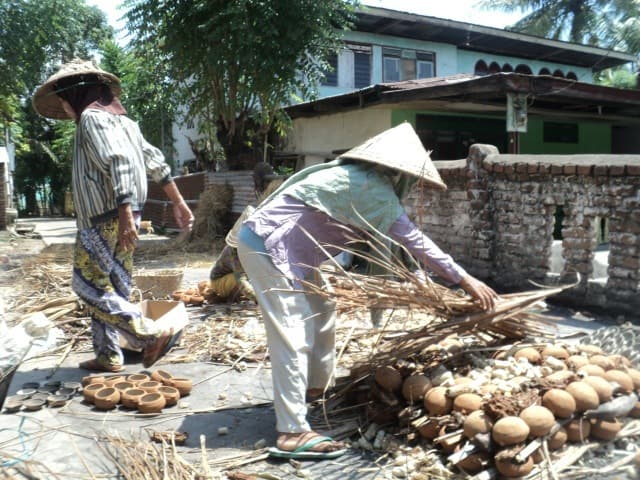- Abdul-Rahman Abdullah, Merentau, 2016 (Image courtesy of the artist and This Is No Fantasy + Dianne Tanzer Gallery)
- Abdul-Rahman Abdullah, Merentau, 2016 (Image courtesy of the artist and This Is No Fantasy + Dianne Tanzer Gallery)
- Abdul-Rahman Abdullah, Merentau, 2016 (Image courtesy of the artist and This Is No Fantasy + Dianne Tanzer Gallery)
- Abdul-Rahman Abdullah, 2016, Merentau (Image courtesy of the artist and This Is No Fantasy + Dianne Tanzer Gallery)
Abdul-Rahman Abdullah is a Perth-based sculptor whose figurative work conjures the experience of otherness in Australia. In 2015, he visited South Sulawesi with his father to research his Bugis ancestry going back 18 generations. This journey helped re-connect with his Bugis family ancestor, Opu Daeng Parani, who took his family and retinue to seek his fortune in Malaysia, 300 years ago. Abdullah also researched this story during a residency at Galeri Petronas in Kuala Lumpur.
Abdul-Rahman Abdullah’s work for the Adelaide Biennal draws on the iconic meaning of objects significant to Bugis culture, such as the rooster and the perahu boat. The rooster is considered Merantau – the one who makes a second home elsewhere. Below, Abdul-Rahman reflects on the way he tells his story. Beyond that, we glimpse into creative life of South Sulawesi today and its continuing resonance among the Yolngu north-east Arnhem Land.
- Palopo, photo by Abdul-Rahman Abdullah
- Old Luwu Palace, photo by Abdul-Rahman Abdullah
- Luwu Palace Museum, photo by Abdul-Rahman Abdullah
- Toraja, photo by Abdul-Rahman Abdullah
- Taraja , photo by Abdul-Rahman Abdullah
- Maros Kampung, photo by Abdul-Rahman Abdullah
- Maros Kampung, photo by Abdul-Rahman Abdullah
Interview with Abdul-Rahman Abdullah
Garland: You seem to reflect on your journey through the work without obvious irony. Contemporary art is often layered with ironic references, seeking to undermine orthodoxies. Do you feel that the South Sulawesi connection is so little found in Australia today that it warranted a more direct approach? Do you think irony can be overdone sometimes?
In exploring these different aspects of the past I am very aware of how little I know about the people and places I am referencing. I’m also very conscious of coming in as an outsider and making broadside commentaries without understanding the full cultural parameters. I want to be very respectful of who is included within the terminology, these things matter a lot to me.
These are some of the reasons that I’ve placed myself into the work. I definitely don’t want to be perceived as speaking on behalf of anybody else. It’s a translation of my own relationship with the past. Northern Australia has a well-documented connection with Makassar through the trepang trade that dates back to well before the European occupation of this country. My own connection to South Sulawesi comes about through a fairly convoluted series of decisions made by my forebears that eventuated in my being born and raised in Australia.
To me, connections with other cultures and places occur on a very human scale, there might be broader axioms and simplified nationalistic narratives within that, but ultimately it comes down to people making decisions for very human reasons such as love, loss, hunger or greed.
My heritage is both seventh generation Australian directly descended from a convict arrival in 1815 as well as Malay (including Bugis, Minangkabau, Orang Asli, Chinese and Arab) through my mother, who after choosing to marry my father migrated to Australia just before the White Australia Policy was fully dismantled. I guess this particular connection may not be very common in Australia, but the idea of cultural, social, religious, ethnic and political connection to different parts of the world defines the non-indigenous population of Australia. We are all Merantau to a certain degree.
My approach to making art is fairly direct, I want to put an audience in the presence of a memory, passage or reflection of my own history. Using a fairly realistic, figurative approach to sculptural outcomes allows me to access relationships that an audience already has with different animals, human beings and objects. If I can place an artistic experience in close proximity with the cultural memory of an audience, I hope that my work can reflect something that is both very personal and universal at the same time.
To answer the question I would say that irony definitely has it’s place in art, it can provide a multi-layered critical approach to different subjects, but it is so tied in with the nuances of social and cultural circumstances that I would hesitate to draw on it for this kind of exploratory project. When irony is overdone, the work can disappear into a cloud of smug.
Garland: Are there any aspects of South Sulawesi culture that you think we should adopt in modern Australia?
Yes, I think that we could gain a lot from smiling at strangers and treating visitors with warmth and hospitality! That would be a great start.
Garland: Is there contemporary art in South Sulawesi? Are you hoping that your work will appeal to them as well as Australian audiences?
There is definitely some amazing contemporary art coming out of South Sulawesi. I only spent a couple of weeks there and my focus was on the historical aspects of the island, so I certainly didn’t get a full picture of the scene. Rumata Artspace is the nexus of contemporary art in Makassar and the upcoming inaugural Makassar Biennale will definitely be an exciting project to keep an eye on. Artists like Firman Djamil have a huge international presence and there is a very strong performance sector with people like Asia Ramli Prapanca leading the way.
There is definitely some amazing contemporary art coming out of South Sulawesi. I only spent a couple of weeks there and my focus was on the historical aspects of the island, so I certainly didn’t get a full picture of the scene. Rumata Artspace is the nexus of contemporary art in Makassar and the upcoming inaugural Makassar Biennale will definitely be an exciting project to keep an eye on. Artists like Firman Djamil have a huge international presence and there is a very strong performance sector with people like Asia Ramli Prapanca leading the way.
I did get to meet a fascinating artist by the name of Bachtiar Hafid (La Batti), his approach to painting truly overturned the orthodoxies of art. I won’t attempt to explain his work but let’s just say the limitations of linear time don’t apply to everyone. If people are interested in the art scene in Makassar, I would encourage them to get in touch with Anggraini Herman, she’s an emerging curator and artist living in Makassar with a very bright future ahead of her.
Meanwhile from South Sulawesi
Abdul-Rahman Abdulah helped Garland locate artists from South Sulawesi so we can learn what is happening in this fascinating region.
South Sulawesi has an active artistic culture that draws on a complex and deep heritage. This includes reference to the 17th century Kingdom of Gowa, under the enlightened leadership of Karaeng Pattingalloang, which resisted the Dutch and developed a unique blend of Western science and local knowledge (Australia was then considered part of this kingdom). Here are some works they provided for this article.
- This painting,medium from cocoa powder,made for cocoa day in south sulawesi
- Detail of mural
- Mural at Rumata Artspace, about Pattingalloang the Prime Minister of the Macassar kingdom in 16 – 17th century, a friend of Galileo
- Dicky Tjandra, Between Buddha and Einstein, 2015
- Zam Kamil, Sombaopu is the capital city of Gowa (Makassar) kingdom
- Zam Kamil, Mantra, 2015, acrylic/tamarindus wood, 33x38x10cm
- Pena Hitam community, Modern good delution, 2015, site specific object
- The ambience of the Makassar Biennale
- Faisal Syarif, Untitled , size 120 cm x120 cm, acrylic on canvas
- Karta Jayadi, Makassar City
- Karta Jayadi, Evicted
- Karta Jayaki, Every time in Jakarta
- Karta Jayadi, Centre of Jakarta
- Karta Jayadi, Back home
And in Australia…
Bugis fishermen have been coming to Australia for centuries. Around Yirrkala, in North-East Arnhem Land, there is a songline of the Yolngu about nganitji, which is the word for ‘alcohol’ that was learned from the Macassan and Bugis fishermen who would stay from the 17th century to collect trepang, or sea slug. The songs referred to buthulu badaw, which means “smashing bottles”. Ceramic fragments from these ceremonies can still be found in northern Australia and bottles are still ritually smashed in ceremonies associated with this songline. There is interest now in using this ceremony to re-connect Yolngu with its origins in South Sulawesi. Images are courtesy of Will Stubbs at Buku-Larrnggay Mulka Centre, Yirrkala.
Artist
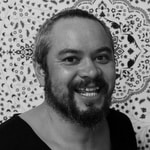 Abdul-Rahman Abdullah is a Perth-based artist whose practice explores the different ways that memory can inhabit and emerge from familial space. Working primarily in sculpture, Abdullah draws on passages of personal history, articulating formative experiences of individual identity within the broader scope of family. Attending the Victorian College of the Arts and then Curtin University, Abdullah graduated with a Bachelor of Arts in 2012. Abdullah’s work has been exhibited recently at the Art Gallery of South Australia, Art Gallery of New South Wales, Art Gallery of Western Australia, Perth Institute of Contemporary Art and the Australian Centre for Contemporary Art.
Abdul-Rahman Abdullah is a Perth-based artist whose practice explores the different ways that memory can inhabit and emerge from familial space. Working primarily in sculpture, Abdullah draws on passages of personal history, articulating formative experiences of individual identity within the broader scope of family. Attending the Victorian College of the Arts and then Curtin University, Abdullah graduated with a Bachelor of Arts in 2012. Abdullah’s work has been exhibited recently at the Art Gallery of South Australia, Art Gallery of New South Wales, Art Gallery of Western Australia, Perth Institute of Contemporary Art and the Australian Centre for Contemporary Art.


